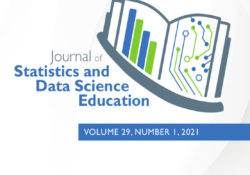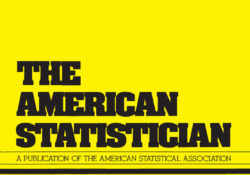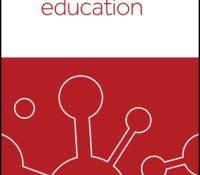eric.ed.gov har udgivet: The emergence of technology has led to numerous changes in mathematical and statistical teaching and learning which has improved the quality of instruction and teacher/student interactions. The teaching of statistics, for example, has shifted from mathematical calculations to higher level cognitive abilities such as reasoning, interpretation, and evaluation (Ben-Zvi, 2000). Visualization is one such technological tool and can be defined as the graphical display of information. The benefit of this approach is in providing the viewer with a visual means of processing information (Segenchuk, 1997). Since the 1980’s, graphical aids have been viewed as an innovative strategy in education, especially for math or science related subjects. The purpose of this study is to investigate the use of Flash applets on Pocket PCs in statistics education, specifically in… Continue Reading →
Like this:
Like Loading...
tandfonline.com har udgivet en rapport under søgningen “Teacher Education Mathematics”: Abstract Formulae display:?Mathematical formulae have been encoded as MathML and are displayed in this HTML version using MathJax in order to improve their display. Uncheck the box to turn MathJax off. This feature requires Javascript. Click on a formula to zoom. Abstract Historically, the introductory course in statistics at the Norwegian University of Life Sciences (NMBU), has taken a traditional, lecture-based form. A previous study at NMBU concluded that the course structure appeared to disfavor certain cognitive or personality types, extraverts in particular. Therefore, in 2016, as an experiment, the course was restructured into a student active learning course following a flipped classroom approach. At the same time, students were encouraged to do an online screening test for cognitive preferences,… Continue Reading →
Like this:
Like Loading...
eric.ed.gov har udgivet: The high levels of anxiety, apprehension, and apathy of students in college algebra courses caused the instructor to create and test a variety of math teaching techniques designed to boost student confidence and enthusiasm in the subject. Overall, this proposal covers several different techniques, which have been evaluated by both students and the instructor. The paper proposes a series of study techniques, which are covered on the first day of class and throughout the course. Armed with practical advice about approaching the algebra course, the students learn by example. The instructor uses examples, such as rules of cricket matches as a way to make the material come to life. Other suggested techniques are making chapter notes available to students, and providing example tests before final exams and… Continue Reading →
Like this:
Like Loading...
tandfonline.com har udgivet en rapport under søgningen “Teacher Education Mathematics”: Abstract Formulae display:?Mathematical formulae have been encoded as MathML and are displayed in this HTML version using MathJax in order to improve their display. Uncheck the box to turn MathJax off. This feature requires Javascript. Click on a formula to zoom. Abstract Although statistical literacy has become a key competence in today’s data-driven society, it is usually not a part of statistics education. To address this issue, we propose an innovative concept for a conference-like seminar on the topic of statistical literacy. This seminar draws attention to the relevance and importance of statistical literacy, and moreover, students are made aware of the process of science communication and are introduced to the peer review process for the assessment of scientific papers.… Continue Reading →
Like this:
Like Loading...
tandfonline.com har udgivet en rapport under søgningen “Teacher Education Mathematics”: Link til kilde
Like this:
Like Loading...
tandfonline.com har udgivet en rapport under søgningen “Teacher Education Mathematics”: Abstract Formulae display:?Mathematical formulae have been encoded as MathML and are displayed in this HTML version using MathJax in order to improve their display. Uncheck the box to turn MathJax off. This feature requires Javascript. Click on a formula to zoom. Abstract Students learn many concepts in the introductory statistics course, but even our most successful students end up with rigid, ritualized knowledge that does not transfer easily to new situations. In this article we describe our attempt to apply theories and findings from learning science to the design of a statistics course that aims to help students build a coherent and interconnected representation of the domain. The resulting practicing connections approach provides students with repeated opportunities to practice connections… Continue Reading →
Like this:
Like Loading...
tandfonline.com har udgivet en rapport under søgningen “Teacher Education Mathematics”: Link til kilde
Like this:
Like Loading...
tandfonline.com har udgivet en rapport under søgningen “Teacher Education Mathematics”: Link til kilde
Like this:
Like Loading...
tandfonline.com har udgivet en rapport under søgningen “Teacher Education Mathematics”: Abstract Abstract In this introduction to the PRIMUS Special Issue on Mathematics for Social Justice we provide a brief history of social justice in the context of undergraduate mathematics pedagogy and explain the purpose and motivation behind this movement in undergraduate education. Link til kilde
Like this:
Like Loading...
tandfonline.com har udgivet en rapport under søgningen “Teacher Education Mathematics”: Abstract Formulae display:?Mathematical formulae have been encoded as MathML and are displayed in this HTML version using MathJax in order to improve their display. Uncheck the box to turn MathJax off. This feature requires Javascript. Click on a formula to zoom. Abstract Reflecting growing emphasis on data analysis and statistical thinking in the information age, mathematics curriculum standards in the U.S. have recently increased expectations for student learning in the domain of statistics and probability. More than 180 teachers in 36 public school districts in Florida applied for a two-week summer institute designed to increase teachers’ content and pedagogical content knowledge in statistics and probability. Individual teachers were assigned at random to a treatment or business-as-usual comparison group. The two-week… Continue Reading →
Like this:
Like Loading...







